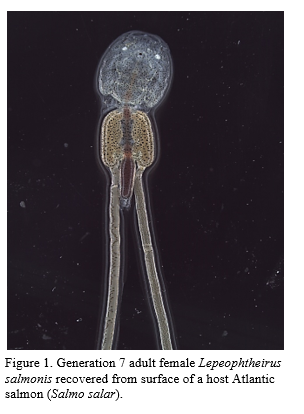ASSESSING THE EVOLUTION OF VIRULENCE OF THE SALMON LOUSE Lepeophtheirus salmonis IN THE BAY OF FUNDY
An unintended consequence of fish farming is the production of an environment which may be more conducive for the evolution of virulence of pathogens to the host in production. Rearing conditions used in salmon aquaculture such as high densities, compressed rearing cycles, limited genetic diversity of broodstock as well as the practices used to control infectious disease such as vaccination, breeding for disease resistance and therapeutants, may all lead to an increased selection pressure for the evolution of virulence in parasites and pathogens. All of which may be occurring without the balancing of negative fitness costs of virulence since a new supply of hosts enter the system every 18-24 months.
The emergence of highly virulent strains of pathogens in salmon aquaculture
not only cause concern for further economic impacts to the industry but may also result in elevated disease spillover and subsequent
risk for wild populations. To our knowledge, changes in the virulence of Canadian louse populations have not yet been assessed, despite having been identified as crucial knowledge gaps to understand the interactions between farmed and wild hosts as well as the impact of increased disease prevalence at sites which may have highly virulent strains.
For this project, we developed a virulence challenge model by rearing lice originating from wild and farm sources
for 7 generations in a common garden experiment and compared virulence on their host, testing the hypothesis that lice originating from farms were more virulent than those from wild sources. RNA sequencing was completed for copepodid, chalimus II and adult stages of the louse as well as their respective attachment sites on the host to determine responses at the host-parasite interface. Additionally, high resolution photos were taken of attachment sites and scored based on lesion size and colouration. Lastly, additional skin, louse and gill tissues were taken for further RT-qPCR analysis and RNA sequencing validation.
